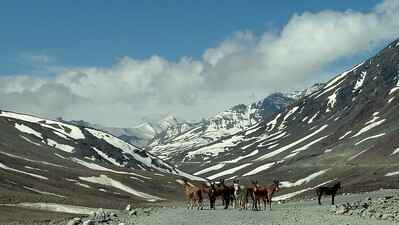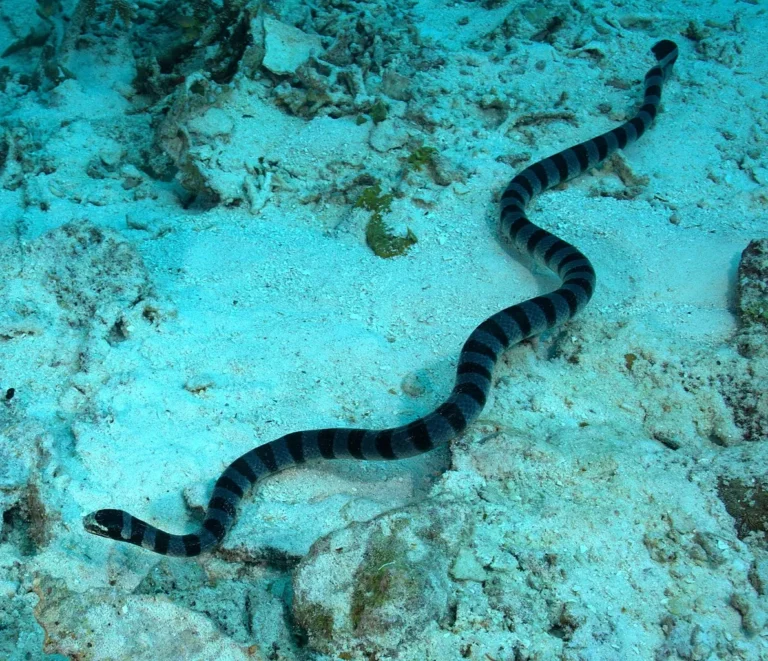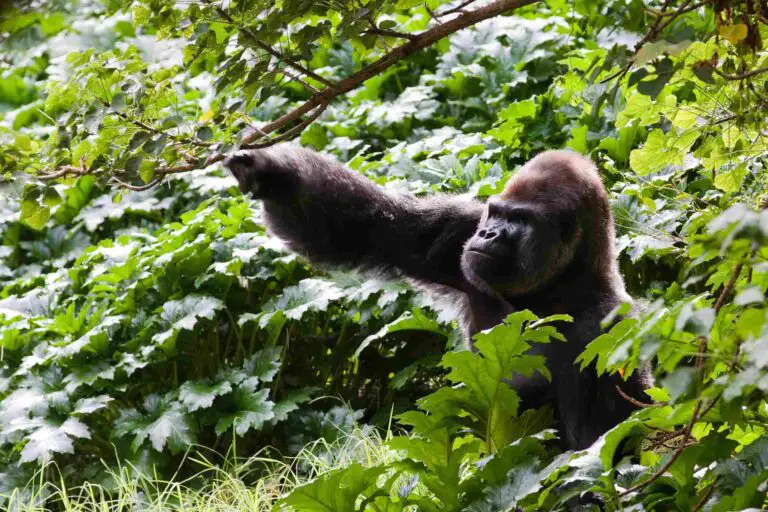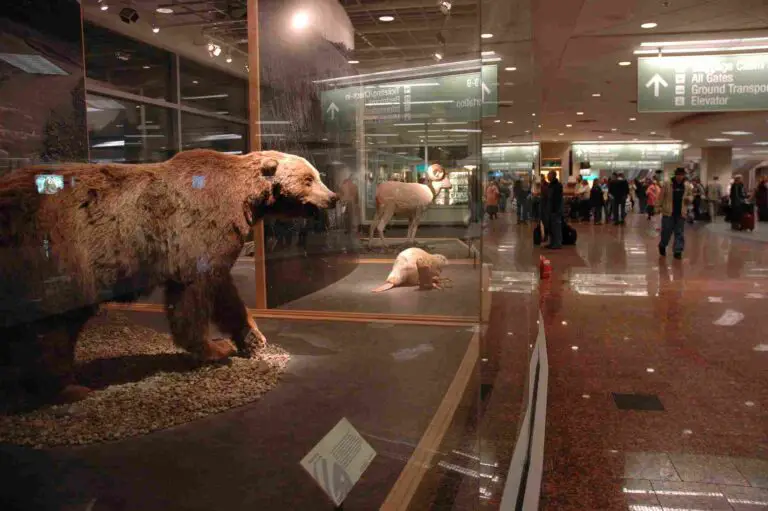Pine Marten Vs Mink Size, Weight, Overall Comparison
In an imagined confrontation between a pine marten and a mink, two members of the weasel family, we explore the potential dynamics of this scenario. Pine martens, known for being less social and having distinctive features such as longer limbs, a unique gait, and a higher tendency to climb trees, are contrasted with minks. This analysis aims to highlight these distinctions and assert that a fight between a pine marten and a mink would likely be very close, given their similar sizes and predatory capacities, especially when referring to the American species. However, both are larger and stronger than a weasel on average.
Pine Marten vs Mink: Assessing the Likely Victor in a Confrontation
In a theoretical scenario involving a pine marten and a mink, both members of the weasel family, the outcome of a fight is influenced by their social behavior, physical characteristics, and predatory capacities. While pine martens and minks may share similarities, the close match in size and predatory capabilities makes predicting the victor challenging, especially when referring to the American species.
I). Social Behavior and Distinctive Features:
– Pine martens are known for being less social compared to minks, and they can be differentiated by their longer limbs, unique gait, and a higher tendency to climb trees. These distinctive features contribute to their adaptability in different environments.
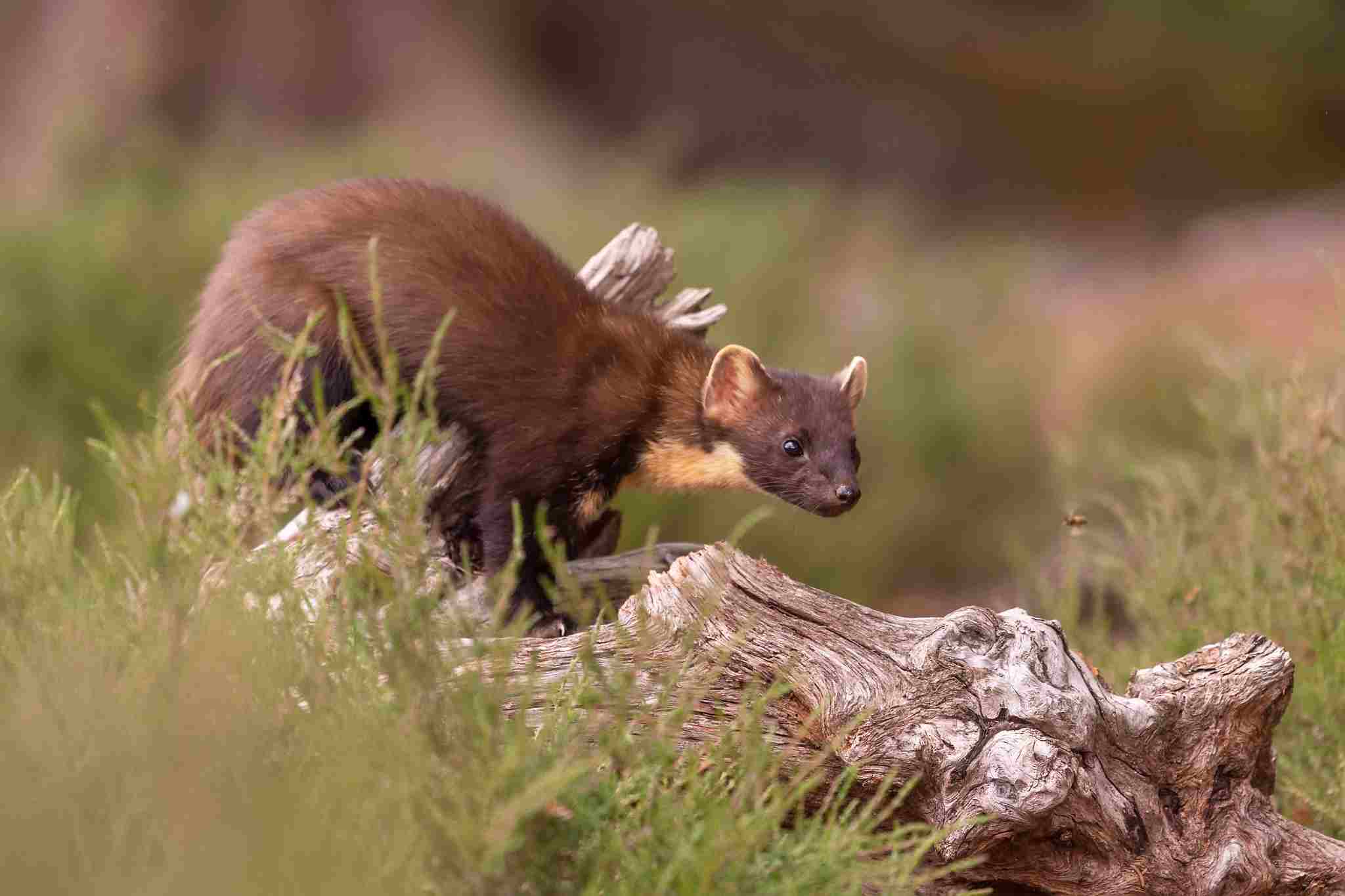
II). Similar Sizes and Predatory Capacities:
– A fight between a pine marten and a mink would likely be very close, as their sizes and predatory capacities are quite similar, especially when referring to the American species. The overlap in these characteristics makes predicting the likely victor challenging.
III). Larger and Stronger Than a Weasel:
– Both pine martens and minks are larger and stronger than a weasel on average. Their size and strength contribute to their effectiveness as predators within the weasel family.
IV). Potential Strategies in a Confrontation:
– In a hypothetical fight, both the pine marten and the mink may employ defensive maneuvers and utilize their agility, sharp claws, and predatory instincts. The closely matched physical attributes could result in a dynamic and unpredictable confrontation.
V). Overall Dynamics:
– In this hypothetical scenario, a fight between a pine marten and a mink would likely be very close, given their similar sizes and predatory capacities, especially when referring to the American species. The overall dynamics of the confrontation would depend on the specific behaviors and strategies employed by each individual, making the outcome challenging to predict conclusively within the weasel family.
*Details of Comparison
| Criteria | Pine Marten | Mink |
| Appearance | Sleek, dark brown fur, cream-colored throat |
Slender, glossy fur, variable colors
|
| Size | 18-28 inches in length, similar tail lengths |
18-28 inches in length, similar tail lengths
|
| Weight | 1.1-3.3 pounds | 1.5-3.5 pounds |
| Bite Force (PSI) | Limited data |
Estimated 1,100 PSI
|
| Offensive Advantages | Agile climbers |
Powerful jaws, sharp claws
|
| Defensive Advantages | Escapes into trees |
Musk secretion, water retreat
|
| Speed | Up to 10 mph |
Swift swimmers, 3.7 mph on land
|
| Agility | Highly agile, pine martens specialize in climbing |
Highly agile, both on land and in water
|
| Overall Physical Capacity | Well-rounded, adapted to specific habitats |
Well-rounded, adapted to specific habitats
|
| Habitat Preference(s) | Forested areas |
Riparian habitats, aquatic environments
|
| Tracks | Distinctive, resembling bear prints |
Webbed tracks near water
|
| Lifespan | 5-10 years |
3-4 years in the wild, longer in captivity
|
| Mode of Feeding | Omnivorous |
Carnivorous, focused on aquatic prey
|
| Intelligence | Display problem-solving skills and adaptability |
Display problem-solving skills and adaptability
|
| Social Behavior | Mostly solitary with some social interactions during mating |
Mostly solitary with territorial behaviors during breeding
|
| Mode of Reproduction | Kits born in spring or early summer |
Kits born in spring or early summer
|
| Parental Behavior | Females raise kits alone |
Mothers care for kits until they can hunt
|
| Proximity to Human-Inhabited Areas | Near settlements, avoid direct contact |
Commonly found near water bodies close to humans
|
| Behavior Toward Humans | Shy and elusive |
Bold near water, may avoid direct contact
|
| Danger Posed to Humans | Rarely pose significant threats |
Rarely pose significant threats
|
| Associated Precautions | Secure food sources |
Secure waste near water
|
| Conservation Status | Variable, facing threats in some regions |
Variable, impacted by habitat degradation and trapping
|
| Conclusion (Similarities/Differences) | Mustelidae family, carnivorous habits, overlapping size |
Habitat preferences, ecological roles influenced by behavior and physical features
|
Key Points
Similarities:
-
- Mustelidae family.
- Carnivorous habits.
- Overlapping size.
Differences:
-
- Habitat preferences.
- Ecological roles influenced by behavior and physical features.
1. Taxonomy:
Pine Marten (Martes martes):
Kingdom: Animalia
Phylum: Chordata
Class: Mammalia
Order: Carnivora
Family: Mustelidae
Genus: Martes
Species: Martes martes
Mink (Neovison vison):
Kingdom: Animalia
Phylum: Chordata
Class: Mammalia
Order: Carnivora
Family: Mustelidae
Genus: Neovison
Species: Neovison vison
2. Appearance:
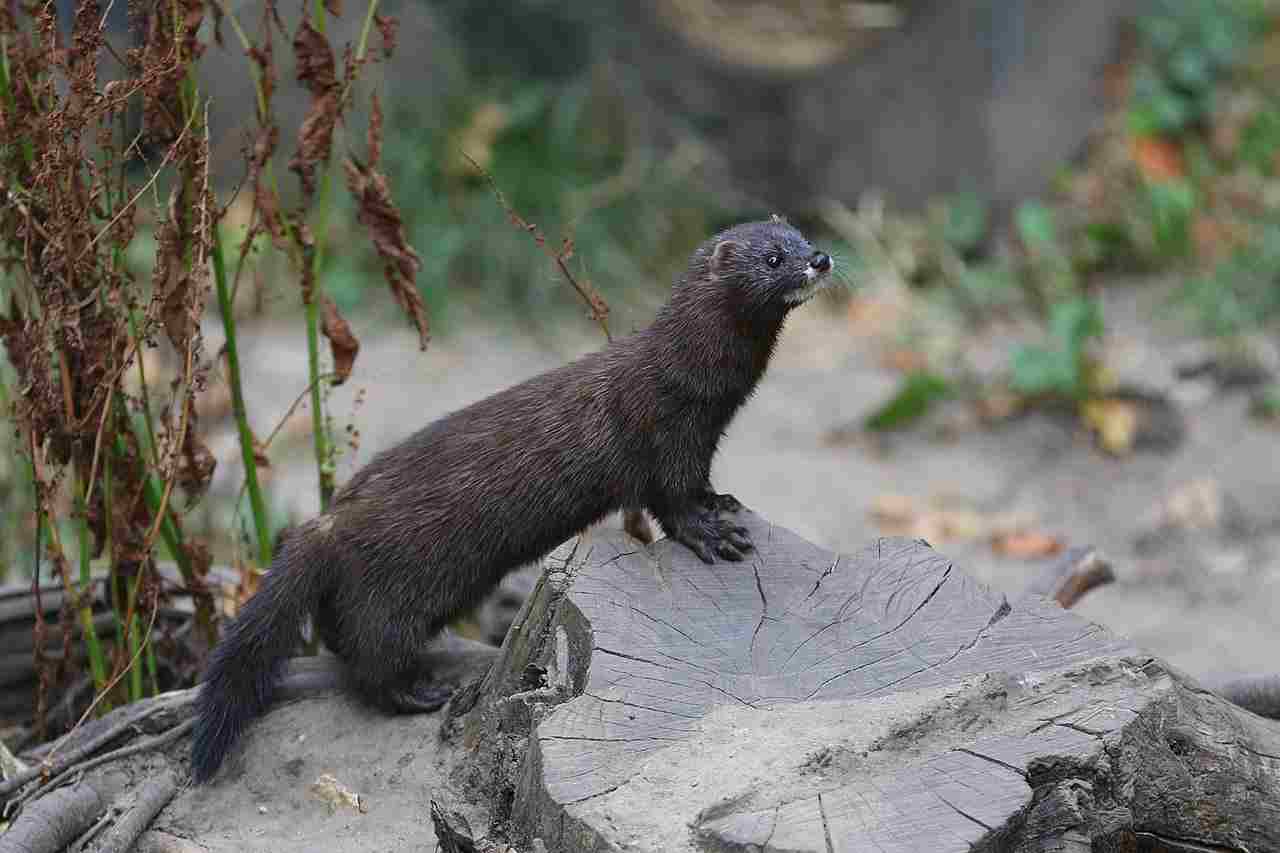
Pine Marten:
Sleek, slender body with a dark brown fur coat, often featuring a distinct cream-colored throat patch.
Bushy tail, pointed face, and relatively large ears.
Mink:
Slender, elongated body covered in dense, glossy fur that can be various colors, including brown, black, or white.
Tapered face and a long, thick tail.
Comparison: Pine martens generally have a more robust build and distinctive coloration compared to the sleeker and more variable appearance of minks.
Ecological Implications: These variations in appearance can influence their roles in ecosystems, with pine martens potentially having different predation strategies based on their distinct visual features compared to minks.
3. Size:
Pine Marten:
Length: 18-28 inches (45-70 cm)
Tail length: 6-9 inches (15-23 cm)
Mink:
Length: 18-28 inches (45-70 cm)
Tail length: 7-9 inches (18-23 cm)
Comparison: The size range is similar for both species, with overlapping lengths and tail dimensions.
Ecological Implications: Similar sizes may suggest overlapping ecological niches, potentially leading to competition for resources in shared habitats.
4. Weight:
Pine Marten:
Weight: 1.1-3.3 pounds (0.5-1.5 kg)
Mink:
Weight: 1.5-3.5 pounds (0.7-1.6 kg)
Comparison: Both species exhibit comparable weight ranges, with minks generally being slightly heavier on average.
Ecological Implications: Weight can influence predation strategies and resource requirements, affecting the species’ roles within their ecosystems.
5. Bite Force (PSI – Pounds per Square Inch):
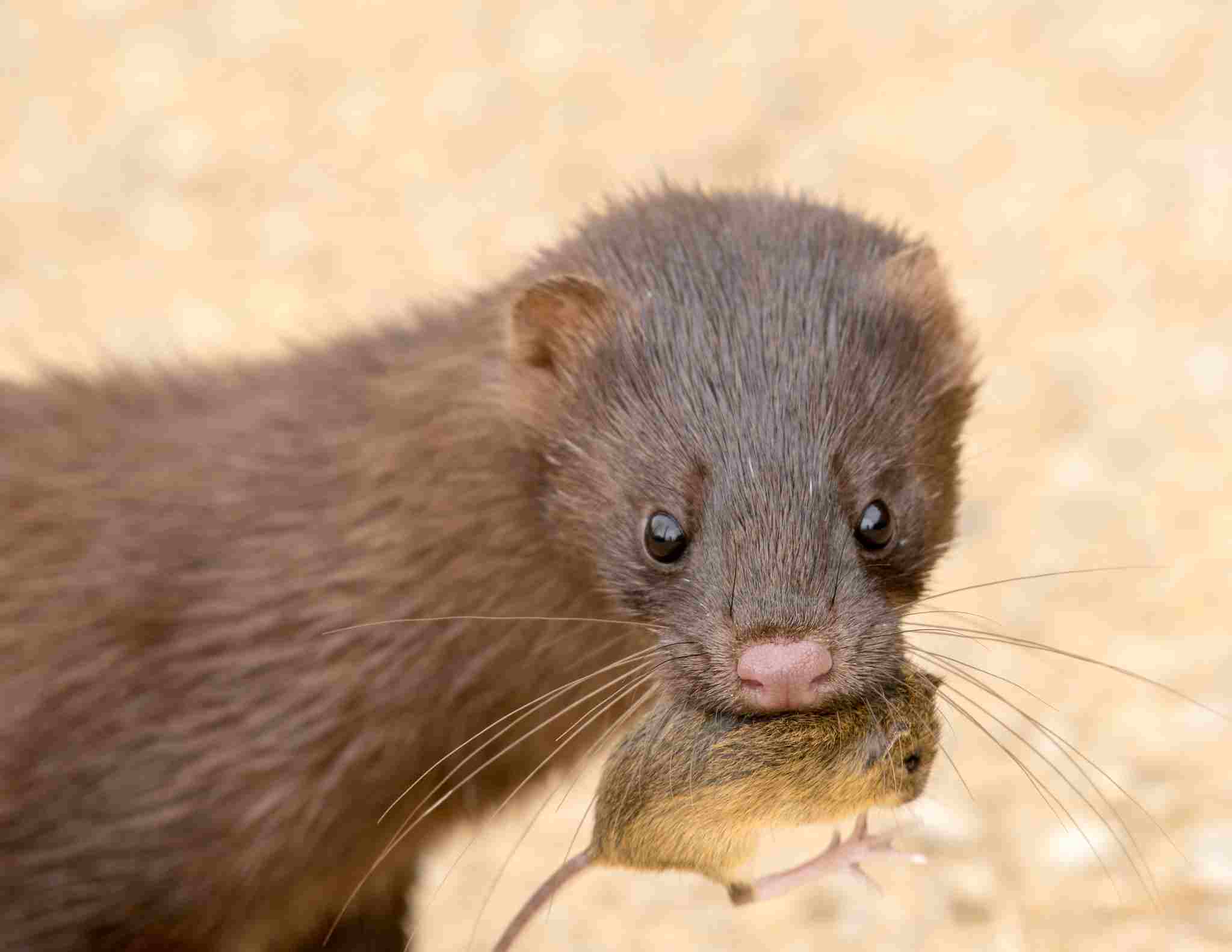
Pine Marten:
Bite force not extensively documented.
Mink:
Estimated bite force: 150 PSI
Comparison: Limited data on pine marten bite force makes direct comparisons challenging, but minks are known to have a powerful bite.
Ecological Implications: Bite force is crucial for hunting and consuming prey; minks may have an advantage in capturing and handling different types of prey based on their bite force.
6. Physical Offensive Advantages:
Pine Marten:
Sharp, retractable claws and agile movements aid in climbing trees to pursue prey.
Mink:
Sharp claws and powerful jaws contribute to effective hunting, especially in aquatic environments.
Comparison: While both possess sharp claws, pine martens may leverage agility for tree-climbing, whereas minks may excel in aquatic environments.
Ecological Implications: These offensive features cater to the specific hunting strategies of each species, influencing their prey preferences and hunting habitats.
7. Physical Defensive Advantages:
Pine Marten:
Agile and able to escape into trees to avoid predators.
Mink:
Can emit a strong-smelling musk and may retreat to water to evade threats.
Comparison: Pine martens rely on tree-climbing as a defensive strategy, while minks utilize musk secretion and water retreat.
Ecological Implications: These defensive mechanisms play roles in the survival strategies of each species, influencing their interactions with predators in their respective ecosystems.
8. Speed (Km/hour or Mile/hour):
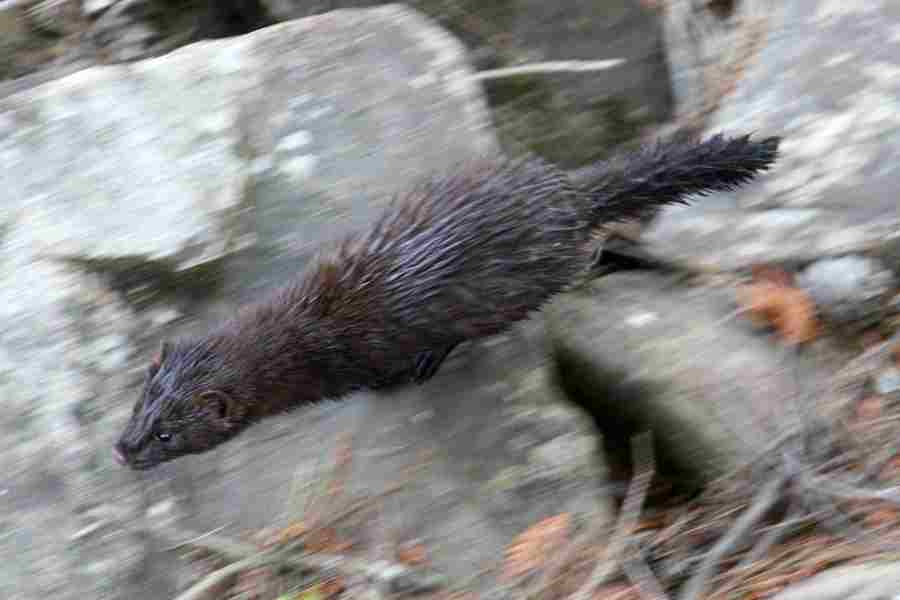
Pine Marten:
Agile and fast runners with speeds up to 10 mph (16 km/h).
Mink:
Swift swimmers, with speeds up to 3.7 mph (6 km/h) on land.
Comparison: Pine martens showcase agility on land, while minks excel in swimming.
Ecological Implications: Speed influences the efficiency of hunting and escaping predators, with each species adapted to their specific environments.
9. Agility:
Pine Marten:
Extremely agile, adept climbers, and capable of making quick, sharp turns.
Mink:
Agile both on land and in water, exhibiting swift and coordinated movements.
Comparison: Both species display high levels of agility, but pine martens may showcase specialized skills in tree-climbing.
Ecological Implications: Agility is crucial for navigating diverse terrains, aiding in successful hunting and evasion of predators. The specific adaptations may reflect their habitat preferences and prey choices.
10. Overall Physical Capacity:

Pine Marten:
Well-rounded physical abilities, combining agility, climbing skills, and moderate speed.
Mink:
Versatile physical capabilities, excelling in swimming, hunting, and displaying agility.
Comparison: Pine martens and minks each possess a combination of skills tailored to their respective habitats and hunting strategies.
Ecological Implications: These overall physical capacities contribute to the adaptability of each species within their specific ecosystems.
11. Habitat Preference(s):
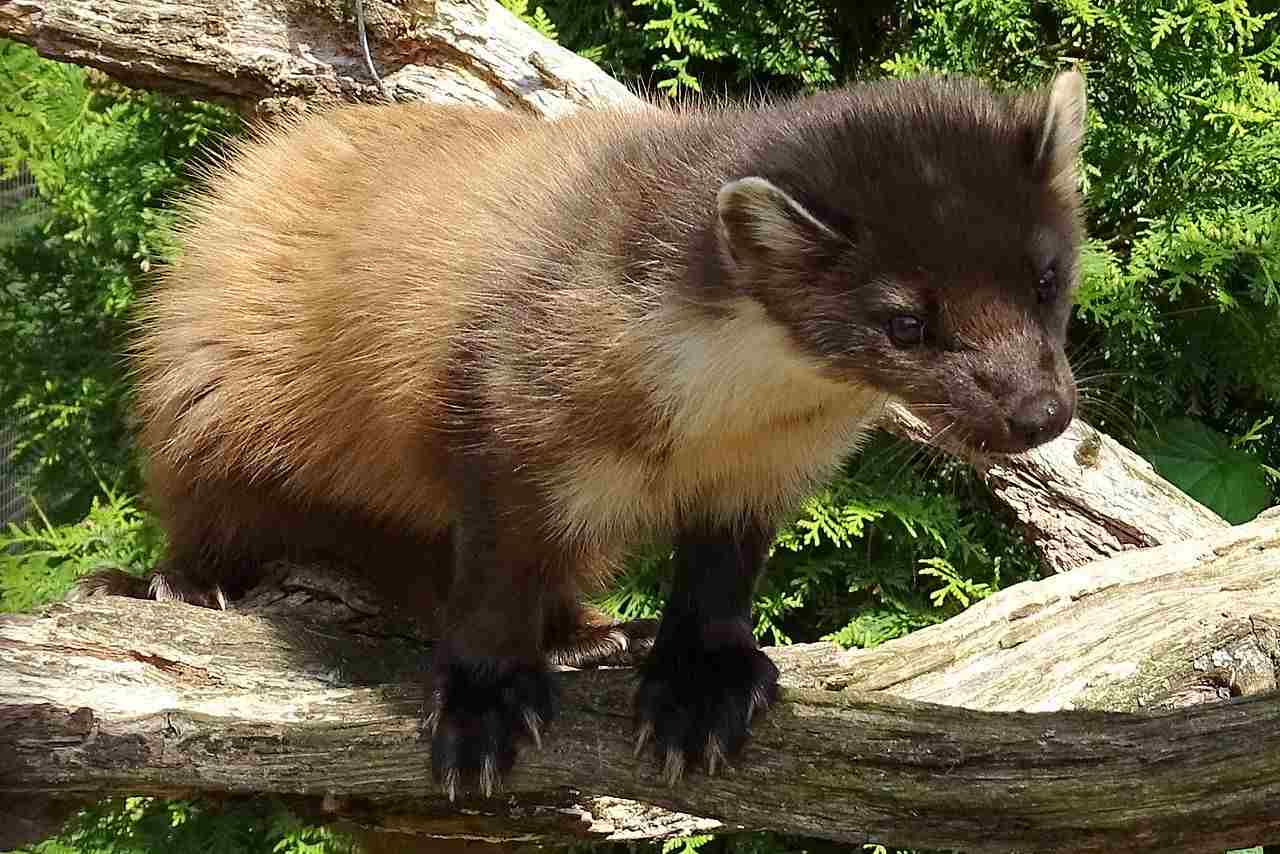
Pine Marten:
Forested areas, preferring mixed woodlands with access to water.
Mink:
Riparian habitats such as streams, rivers, and lakes, with a preference for areas with abundant aquatic prey.
Comparison: While both species may overlap in certain environments, pine martens are more terrestrial, favoring forested habitats, whereas minks are closely associated with aquatic ecosystems.
Ecological Implications: Habitat preferences impact the species’ roles in ecosystems and influence their interactions with other wildlife.
12. Tracks:
Pine Marten:
Distinctive tracks featuring four toe pads and a heel pad, resembling a miniature bear print.
Mink:
Webbed tracks with five toes, often showing claw marks, especially in soft soils near water.
Comparison: Pine marten tracks are more terrestrial and resemble those of other land-dwelling mustelids, while mink tracks reflect adaptations for both land and aquatic travel.
Ecological Implications: Tracking these species can aid in understanding their movements and identifying their presence in different habitats.
13. Lifespan:
Pine Marten:
Typically 5-10 years in the wild.
Mink:
In the wild, around 3-4 years, but longer in captivity, reaching up to 10 years.
Comparison: Pine martens generally have a longer lifespan in the wild compared to minks.
Ecological Implications: Lifespan influences population dynamics and reproductive strategies, impacting the species’ roles in maintaining ecological balance.
14. Mode of Feeding:
Pine Marten:
Omnivorous diet, feeding on small mammals, birds, insects, fruits, and occasionally carrion.
Mink:
Carnivorous diet, primarily hunting fish, amphibians, small mammals, and birds.
Comparison: Pine martens have a broader diet, including plant matter, while minks focus mainly on animal prey, especially aquatic organisms.
Ecological Implications: Differences in feeding preferences contribute to their roles in controlling various prey populations within their ecosystems.
15. Intelligence:
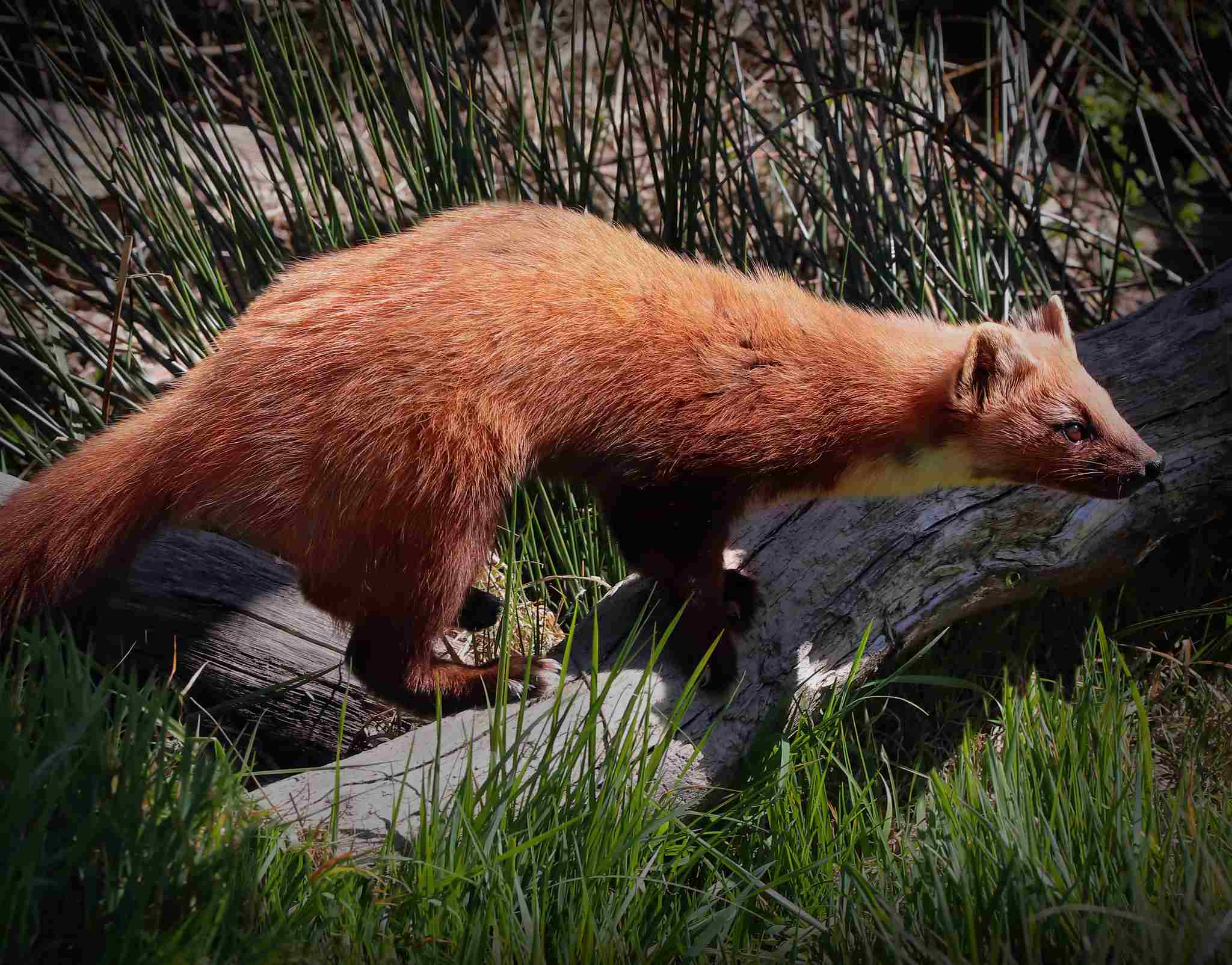
Pine Marten:
Display problem-solving skills, adaptability, and efficient hunting techniques.
Mink:
Intelligent hunters, known for strategic approaches to catching prey.
Comparison: Both species exhibit notable intelligence, adapting their hunting strategies to the challenges presented by their environments.
Ecological Implications: Intelligence contributes to the efficiency of foraging and hunting, influencing the ecological balance within their habitats.
16. Social Behavior:
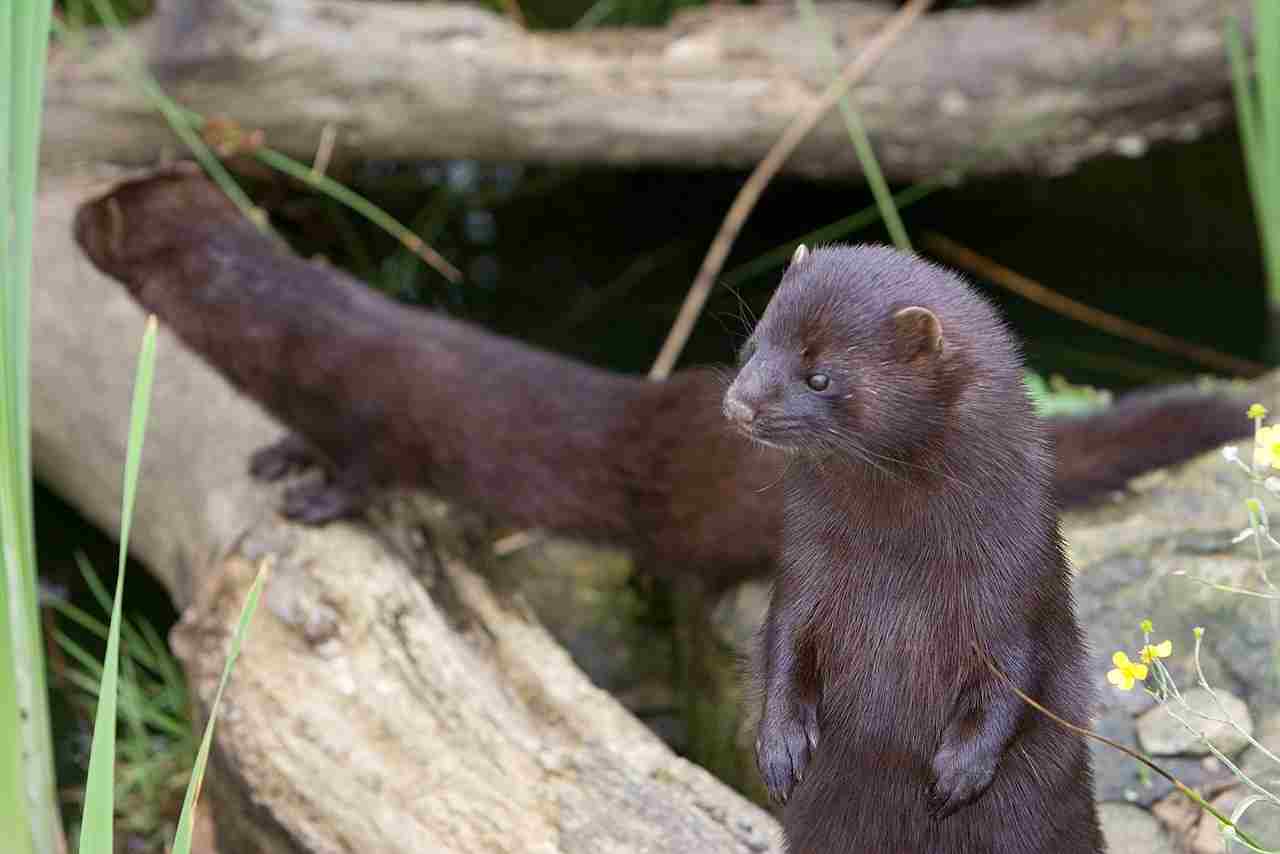
Pine Marten:
Mostly solitary, with occasional social interactions during the mating season.
Mink:
Solitary, with territorial behaviors, especially during the breeding season.
Comparison: Both species generally exhibit solitary behavior, with social interactions limited to specific reproductive periods.
Ecological Implications: Solitary behavior may reduce competition for resources within their habitats, impacting population dynamics.
17. Mode of Reproduction:
Pine Marten:
Typically give birth to 1-5 kits in spring, with delayed implantation allowing for synchronized births.
Mink:
Litters of 1-8 kits, born in late spring or early summer.
Comparison: Both species have a similar reproductive pattern, with litters born in the spring or early summer.
Ecological Implications: Reproductive strategies influence population dynamics and the species’ ability to adapt to seasonal changes in resource availability.
18. Parental Behavior:
Pine Marten:
Females raise their kits alone, providing protection and teaching them hunting skills.
Mink:
Mothers play a significant role in caring for and protecting their kits until they are old enough to hunt on their own.
Comparison: While both species exhibit maternal care, the extent and duration may vary.
Ecological Implications: Parental behavior impacts the survival and development of offspring, influencing the overall population dynamics within their respective habitats.
19. Proximity to Human-Inhabited Areas:
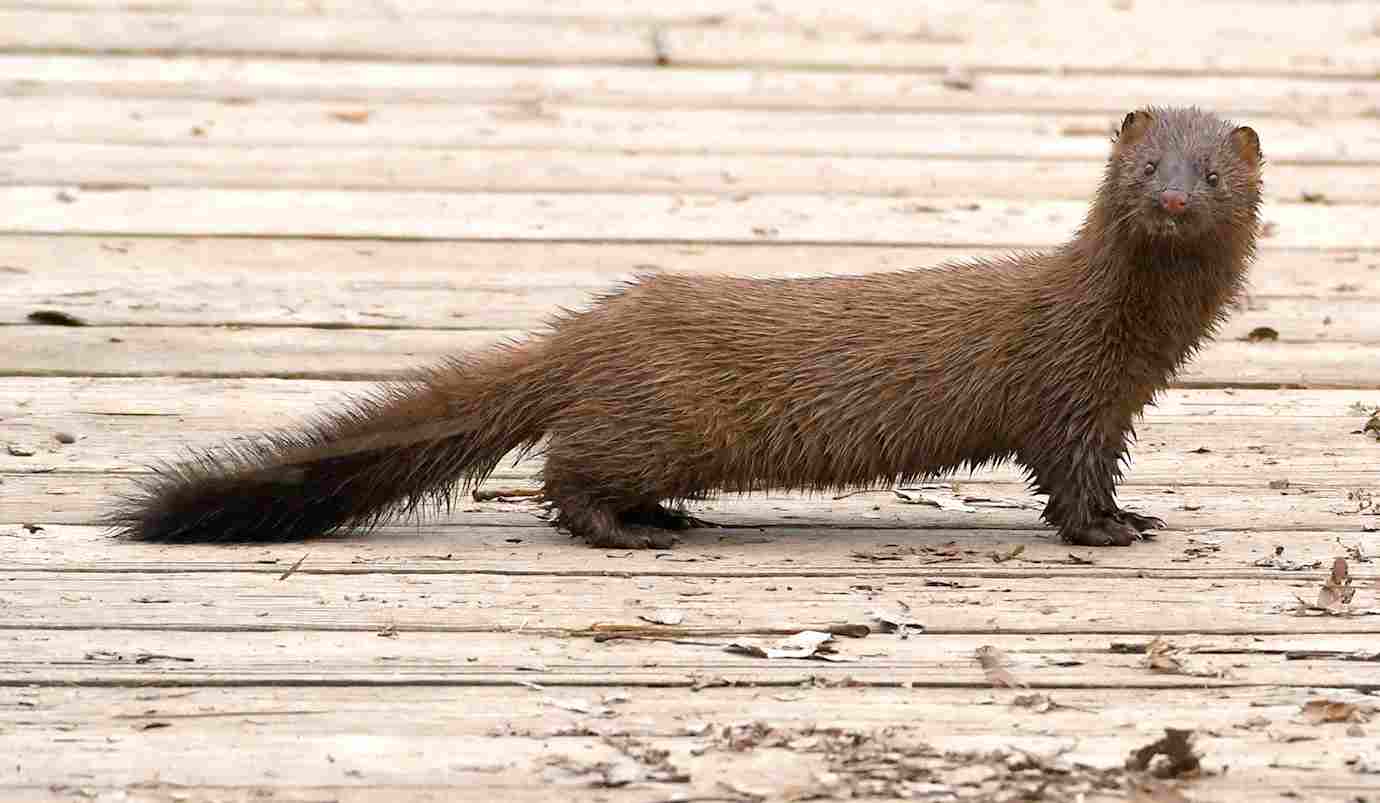
Pine Marten:
Can be found in forested areas near human settlements but generally avoid close contact.
Mink:
Commonly found in and around water bodies, including those near human habitats.
Comparison: Pine martens may be more discreet in their proximity to human settlements compared to minks.
Ecological Implications: The proximity to human-inhabited areas can influence interactions, such as potential conflicts or benefits, with each species adapting differently to anthropogenic landscapes.
20. Behavior Toward Humans:
Pine Marten:
Generally shy and elusive, avoiding direct contact with humans.
Mink:
Can exhibit bold behavior, especially near water bodies, but may still avoid direct contact.
Comparison: Pine martens tend to be more cautious and elusive in their interactions with humans compared to minks.
Ecological Implications: Behavioral responses to humans impact conservation efforts and potential human-wildlife conflicts, influencing management strategies for each species.
21. Danger Posed to Humans:
Pine Marten:
Rarely pose a threat to humans; bites or attacks are extremely uncommon.
Mink:
Generally not aggressive toward humans, but may bite if cornered or threatened.
Comparison: Both species are not known for posing significant dangers to humans.
Ecological Implications: Understanding the potential risks associated with each species contributes to conservation efforts and helps mitigate conflicts between wildlife and human populations.
22. Associated Precautions:
Pine Marten:
Precautions involve securing food sources to prevent potential attraction, especially in areas near their habitats.
Mink:
Precautions may include securing waste near water bodies to reduce the likelihood of attracting minks.
Comparison: Precautions are specific to each species’ habits and habitats, focusing on minimizing opportunities for interaction with humans.
Ecological Implications: Implementing precautions helps prevent potential conflicts and promotes coexistence between humans and these wildlife species.
23. Conservation Status:
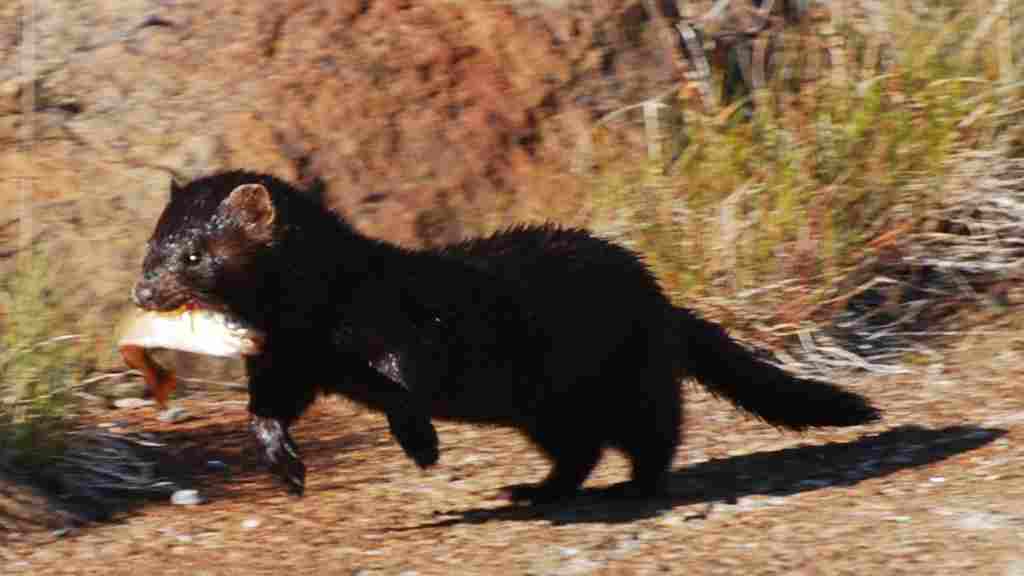
Pine Marten:
Conservation status varies regionally; some populations are stable, while others face threats due to habitat loss and fragmentation.
Mink:
In some regions, mink populations are stable, but in others, they may be impacted by habitat degradation and trapping.
Comparison: Conservation statuses depend on local factors affecting each species.
Ecological Implications: Monitoring and managing conservation statuses are essential for preserving biodiversity and maintaining ecological balance within different ecosystems.
Summary of Comparison
Appearance:
Pine Marten: Sleek, dark brown fur, cream-colored throat patch.
Mink: Slender, glossy fur, variable colors.
Size:
Both species: 18-28 inches in length, similar tail lengths.
Weight:
Pine Marten: 1.1-3.3 pounds.
Mink: 1.5-3.5 pounds.
Bite Force (PSI):
Pine Marten: Limited data.
Mink: Estimated 1,100 PSI.
Physical Offensive Advantages:
Pine Marten: Agile climbers.
Mink: Powerful jaws, sharp claws.
Physical Defensive Advantages:
Pine Marten: Escapes into trees.
Mink: Musk secretion, water retreat.
Speed:
Pine Marten: Up to 10 mph.
Mink: Swift swimmers, 3.7 mph on land.
Agility:
Both species: Highly agile, with pine martens specializing in tree-climbing.
Overall Physical Capacity:
Both species: Well-rounded, adapted to specific habitats.
Habitat Preference(s):
Pine Marten: Forested areas.
Mink: Riparian habitats, aquatic environments.
Tracks:
Pine Marten: Distinctive, resembling bear prints.
Mink: Webbed tracks near water.
Lifespan:
Pine Marten: 5-10 years.
Mink: 3-4 years in the wild, longer in captivity.
Mode of Feeding:
Pine Marten: Omnivorous.
Mink: Carnivorous, focused on aquatic prey.
Intelligence:
Both species: Display problem-solving skills and adaptability.
Social Behavior:
Both species: Mostly solitary with some social interactions during mating.
Mode of Reproduction:
Both species: Kits born in spring or early summer.
Parental Behavior:
Pine Marten: Females raise kits alone.
Mink: Mothers care for kits until they can hunt.
Proximity to Human-Inhabited Areas:
Pine Marten: Near human settlements but avoid direct contact.
Mink: Commonly found near water bodies close to humans.
Behavior Toward Humans:
Pine Marten: Shy and elusive.
Mink: Bold near water, may avoid direct contact.
Danger Posed to Humans:
Both species: Rarely pose significant threats.
Associated Precautions:
Pine Marten: Secure food sources.
Mink: Secure waste near water.
Conservation Status:
Pine Marten: Variable, facing threats in some regions.
Mink: Variable, impacted by habitat degradation and trapping.
Conclusion:
I). Similarities:
Both pine martens and minks belong to the Mustelidae family and exhibit carnivorous feeding habits.
They share similarities in size, with overlapping lengths and weights.
II). Differences:
Differences in habitat preferences, with pine martens favoring forested areas and minks associated with aquatic habitats.
Varied ecological roles, influenced by distinct physical features and behaviors, impacting their contributions to local ecosystems.
